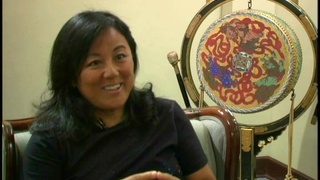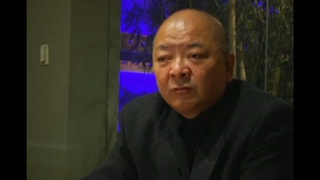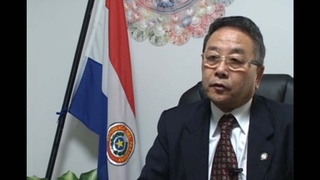Interviews
Differing responses by gender to the Hapa Project
One thing I found that was really interesting that I would not have guessed is if I photographed a thousand people, I’d say two-thirds to three-quarters were women. I would not have guessed that would have happened and I realized—it made me think a lot about why more women—and it’s not like there’s biologically more women Hapas, you know. It made me realize that maybe women in this country are more likely to deal with this question and they’re more interested in it and they’re more ready to volunteer to talk about it.
That was a big insight to me because certainly I talk a lot about masculinity in my work, and I talk a lot about how we measure strength in this country versus in eastern philosophy. I mean we have these things of strength here, I talk with my classes about having to measure masculine strength here, “Oh, well he doesn’t cry, he’s so strong,” you know. “His father died, he didn’t cry” of “He fought off this intruder” or “He beat this guy up”. You know, versus this kind of strength where mastering quantum physics or mastering the violin or taking care of elderly parents, that amount of strength isn’t valued in this country. And I think those two things kind of go hand in hand, that talking about yourself and willing to be photographed and talk about yourself isn’t perhaps a masculine strength that’s valued in this country. So I learned—that brought that home to me, that’s something that I’ve always explored.
Date: May 3, 2006
Location: California, US
Interviewer: Jim Bower
Contributed by: Watase Media Arts Center, Japanese American National Museum.
Explore More Videos

Is non-integration due to the distrust because of what happened in the Second World War? (Spanish)
(b. 1962) Peruvian Poet, Okinawan descendant

I’m a Japanese, Peruvian… who am I? (Spanish)
(b. 1962) Peruvian Poet, Okinawan descendant

Being a Nikkei today (Spanish)
(b. 1962) Peruvian Poet, Okinawan descendant

Histories of immigrants (Spanish)
(b. 1962) Peruvian Poet, Okinawan descendant

The myth of the sacrifice of immigrants (Spanish)
(b. 1962) Peruvian Poet, Okinawan descendant

Paisaje terrestre [Terrestrial landscape] (Spanish)
(b. 1962) Peruvian Poet, Okinawan descendant

Fitting back into American life
(1928 - 2008) Drafted into both the Japanese Imperial Army and the U.S. Army.

Interpretation of Nikkei
(1919-2020) Member of the 1800th Engineering Battalion. Promoted Japan-U.S. trade while working for Honda's export division.

Identity (Japanese)
(1928 - 2008) Drafted into both the Japanese Imperial Army and the U.S. Army.

Integrating As First-Generation Japanese-Peruvian (Japanese)
(b. 1962) Japanese restaurant owner and chef in Peru

Peru Representative vs. Japan Representative (Japanese)
(b. 1962) Japanese restaurant owner and chef in Peru

Thoughts on Japan (Japanese)
(b. 1962) Japanese restaurant owner and chef in Peru


Being Nikkei: A Double Responsibility (Spanish)
(1958-2014) Former Bolivian Ambassador to Japan

The Impact of Technology in Japan (Spanish)
(1958-2014) Former Bolivian Ambassador to Japan
